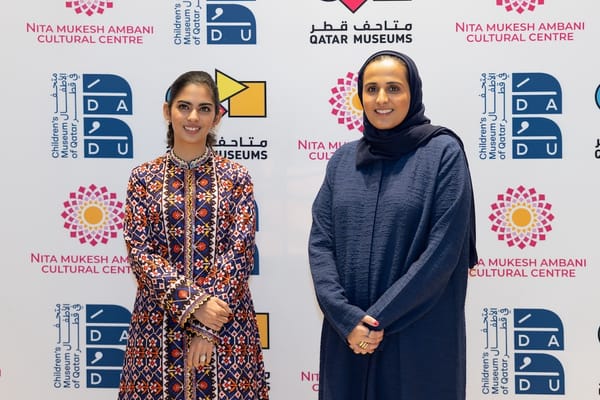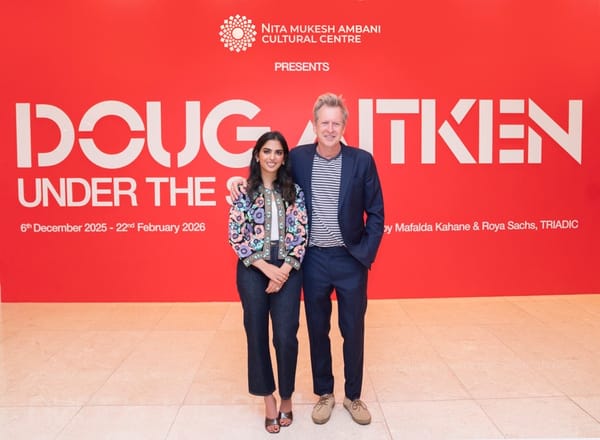Chay Reds, Ferrous Black: Weaving Untold Narratives of South Asia's Textile Heritage
Chay Reds, Ferrous Black unveils the vibrant textile trade between India and Sri Lanka, exploring shared colours, motifs, and narratives. This MAP exhibition celebrates a rich cultural kinship, shedding light on untold South Asian stories.
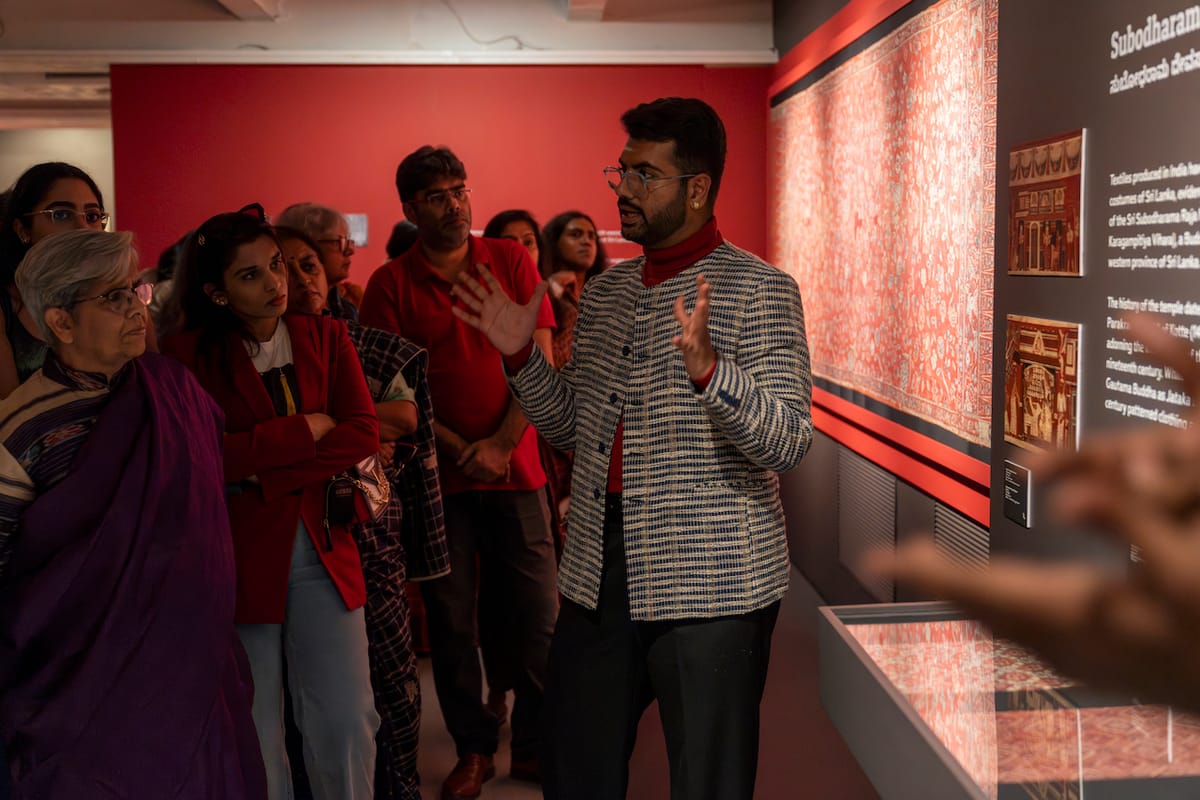
The Museum of Art & Photography (MAP), Bengaluru, brings to life a little-explored chapter of South Asian history with Chay Reds, Ferrous Black. This exhibition delves into the textile trade between India and Sri Lanka, shedding light on the vibrant cultural exchanges that shaped the identities of these two civilizations. Curated by designer, researcher, and educator Yash Sanhotra, the exhibition uses colours, motifs, and techniques to tell stories that have long remained in the shadows of mainstream scholarship.
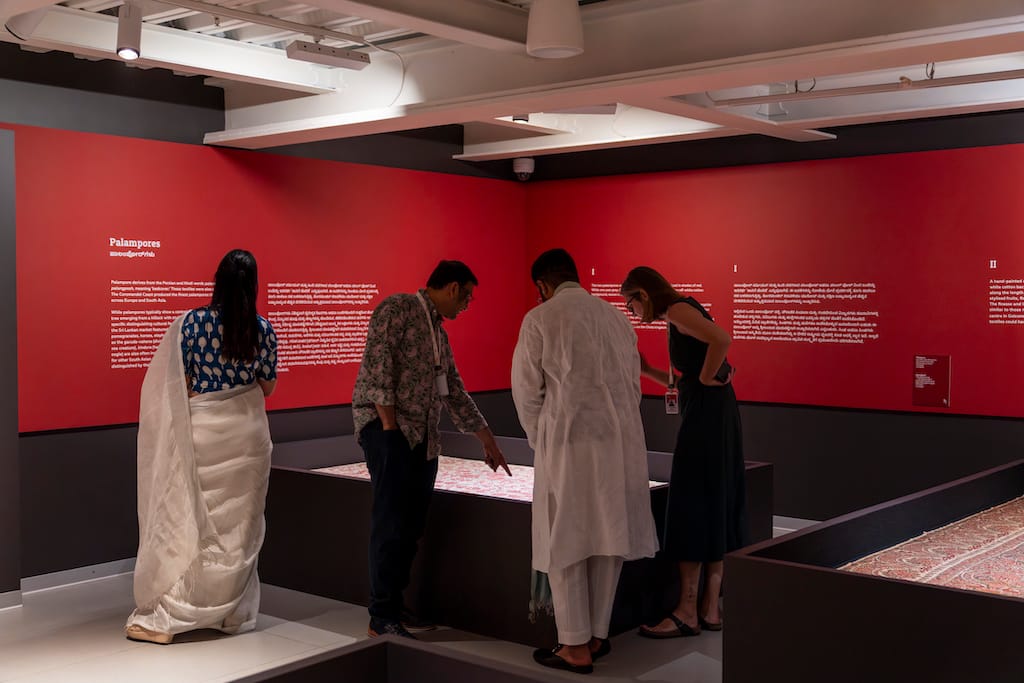
Illuminating the Lesser-Known
For Yash Sanhotra, Chay Reds, Ferrous Black represents a mission to uncover narratives that often go untold. “As a person passionate about South Asian culture, I tend to take up the challenge to explore its lesser-known aspects,” Sanhotra explains. His approach, deeply rooted in curiosity and cultural appreciation, reflects MAP’s mission of offering fresh perspectives on South Asian art and history.
This exhibition stands out not just for its focus on textile artistry but also for its emphasis on a region often sidelined in discussions about Indian trade textiles. While textiles like chintz and kalamkari have been widely studied in the context of European and Southeast Asian markets, Sri Lanka’s role in this cultural exchange remains under-explored. “Unlike the specific demands of Southeast Asia and Europe, Sri Lanka exhibited a more diverse taste in textiles, which made uncovering its preferences particularly exciting,” Sanhotra shares.
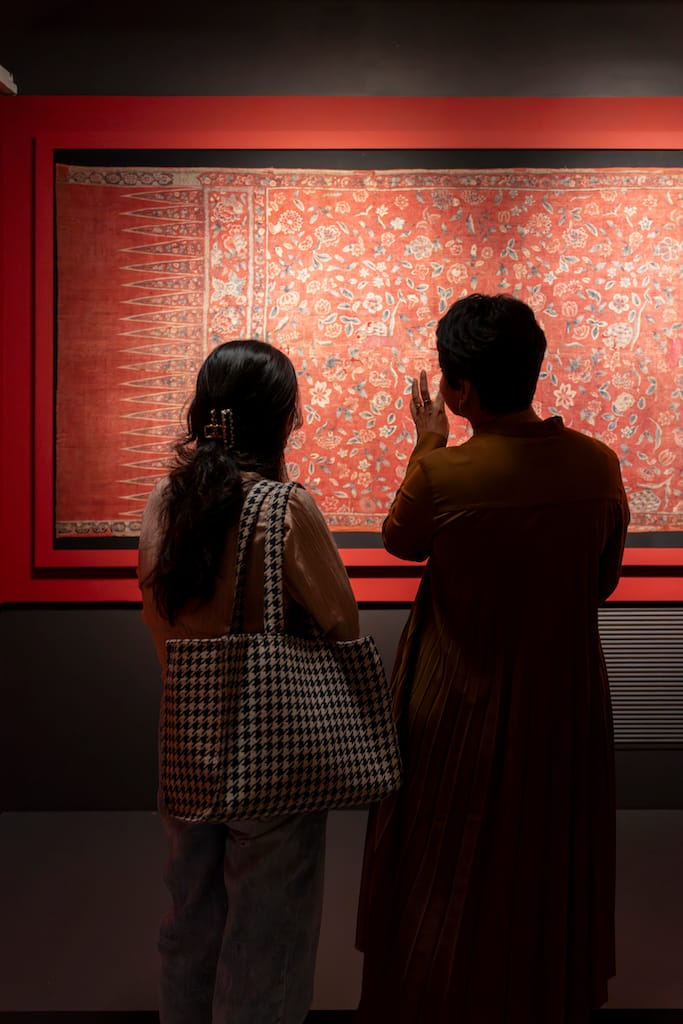
The Power of Red and Black
The exhibition’s evocative title draws attention to two iconic hues that dominate the textiles: chay red and ferrous black. These colours are not merely aesthetic; they carry deep cultural and spiritual significance. “The superior quality of chay root from Jaffna, combined with the dyeing skills of local artisans, resulted in brilliant and durable shades of red,” Sanhotra explains. Similarly, black pigments were derived from iron, a resource abundantly available in Sri Lanka.
These colours held a profound place in Sri Lankan art, appearing not only in textiles but also in religious and domestic contexts. “Red and black became markers of a syncretic culture, especially in religious spheres, symbolizing both individuality and shared heritage,” Sanhotra notes. The exhibition celebrates how these hues connect the natural resources of Sri Lanka with the artisanal expertise of its people.
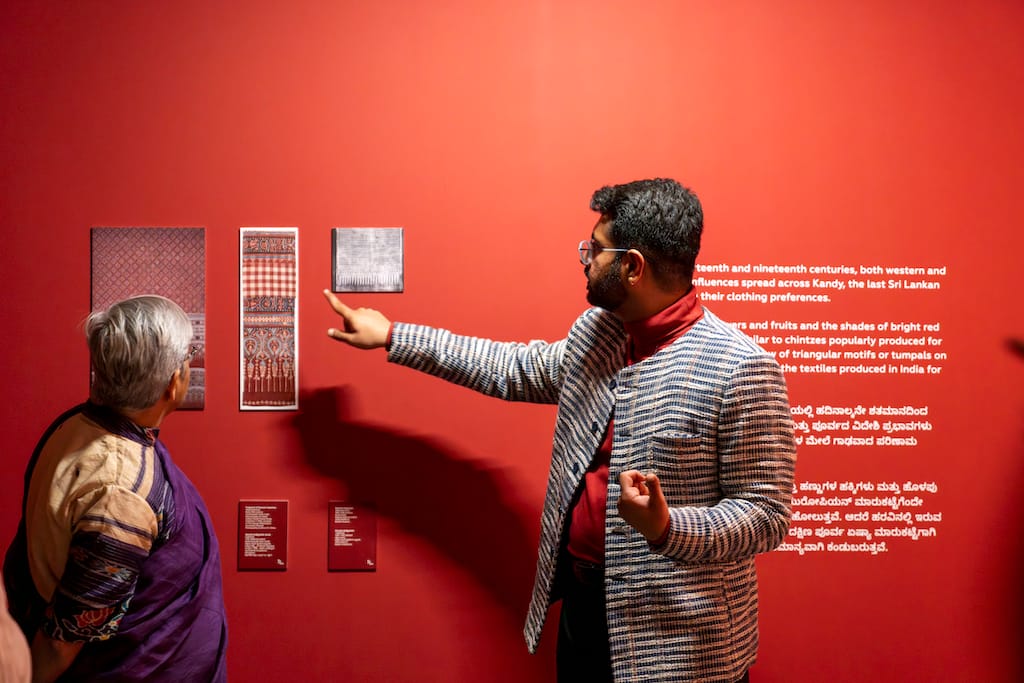
Exploring “The Sri Lankan Taste”
A highlight of the exhibition is its exploration of what Sanhotra terms “The Sri Lankan Taste.” By collaborating with scholars like Rosemary Crill and Steven Cohen, the curatorial team identified textiles in the MAP collection that resonated with Sri Lankan aesthetics. “The prominence of red and black, along with motifs deeply tied to Sri Lankan culture, helped us define this unique taste,” Sanhotra explains.
Unlike the rigid demands of other markets, Sri Lankan preferences reflected an openness to diverse designs and techniques. This diversity is evident in the motifs adorning the textiles, such as pomegranates, elephants, and peacocks. These symbols, while rooted in Indian traditions, took on new layers of meaning in the Sri Lankan context. For instance, the peacock, revered in both Hinduism and Buddhism, became a symbol of protection against venomous creatures in Sri Lanka. Similarly, the elephant, a staple in religious and royal ceremonies, symbolized strength and prosperity.
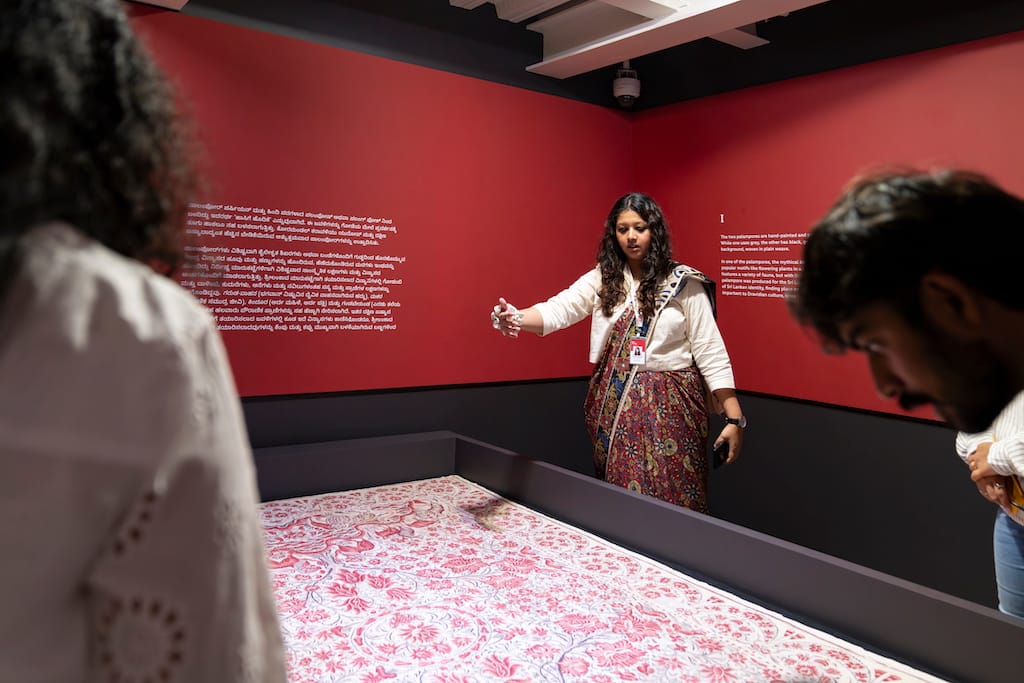
Motifs as Cultural Bridges
Motifs in the textiles on display serve as cultural bridges, embodying the shared values and beliefs of India and Sri Lanka. Sanhotra elaborates on the significance of several designs: “Mythological creatures like the Kindura, Gandaberunda, and Makara reflect the deep interconnectedness of South Asian cultures.” The Hamsa, for instance, symbolizes wisdom and is revered in both Hindu and Buddhist traditions. “These motifs are not just decorative; they carry layers of meaning, connecting communities through shared stories and values,” he adds.
The exhibition also emphasizes how these symbols evolved through trade and cultural exchange. “It’s fascinating how familiar motifs began to mirror Sri Lanka’s own sacred imagery over time, demonstrating the fluid exchange of artistic and religious ideals,” Sanhotra notes. By highlighting these transformations, the exhibition invites visitors to explore the interplay between tradition and innovation.
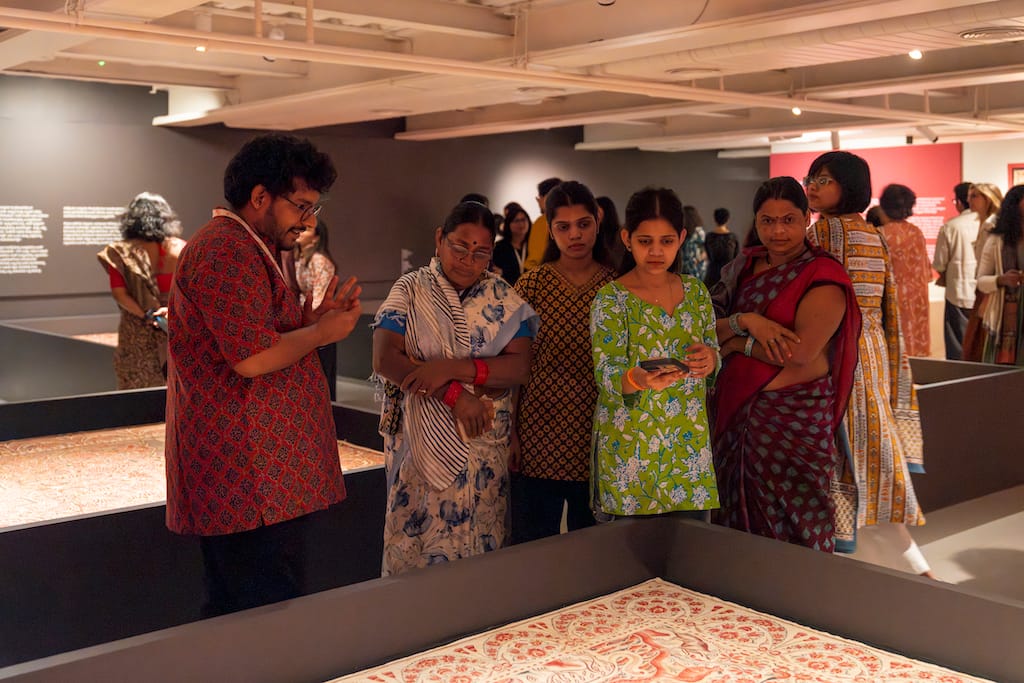
A South Asian Perspective
One of the most groundbreaking aspects of Chay Reds, Ferrous Black is its emphasis on a South Asian perspective, challenging the traditionally Western-centric study of Indian textiles. Sanhotra highlights the importance of contextualizing these artefacts within their cultural origins: “The term ‘chintz’ often used in Western scholarship is descriptive of British trade and excludes the deeper, older histories of textile production and exchange in South Asia.”
Instead, the exhibition uses regional terms like "sarasse" (Dutch) and "kalamkari" (Deccan) to provide a more nuanced understanding. “We’ve chosen to focus on the techniques used, describing them as painted and printed textiles, while also referencing the historical and regional terminologies,” Sanhotra explains. This approach not only deepens appreciation for the textiles but also honors the cultural identities they represent.
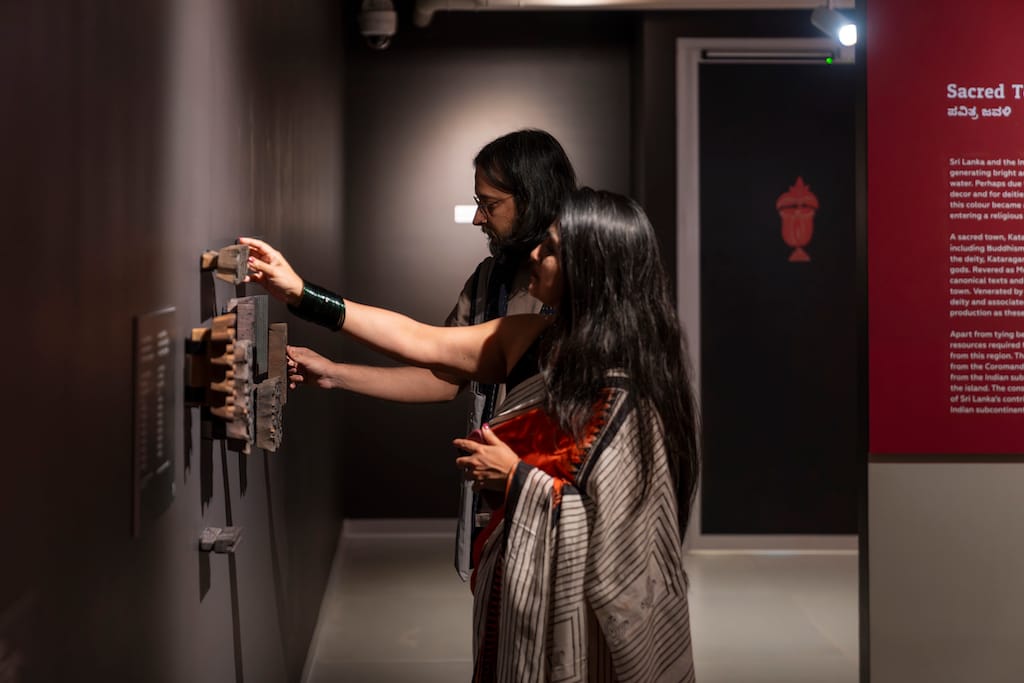
Lessons in Sustainability
As a designer with a background in textile and apparel design, Sanhotra is deeply invested in the intersection of heritage and sustainability. He views the historical practices showcased in Chay Reds, Ferrous Black as a valuable resource for contemporary makers. “Understanding the historical and cultural significance of textiles enriches sustainable practices, showing how resourcefulness and quality were integral to production long before sustainability became a global concern,” he says.
However, Sanhotra does not shy away from addressing the darker aspects of textile history, including exploitation during colonial rule. “A big part of sustainable textile production today involves creating safe spaces and fair trade practices, while acknowledging the violent histories of slavery and colonialism,” he notes. Through this lens, the exhibition serves as both a celebration of craftsmanship and a critique of unsustainable practices.
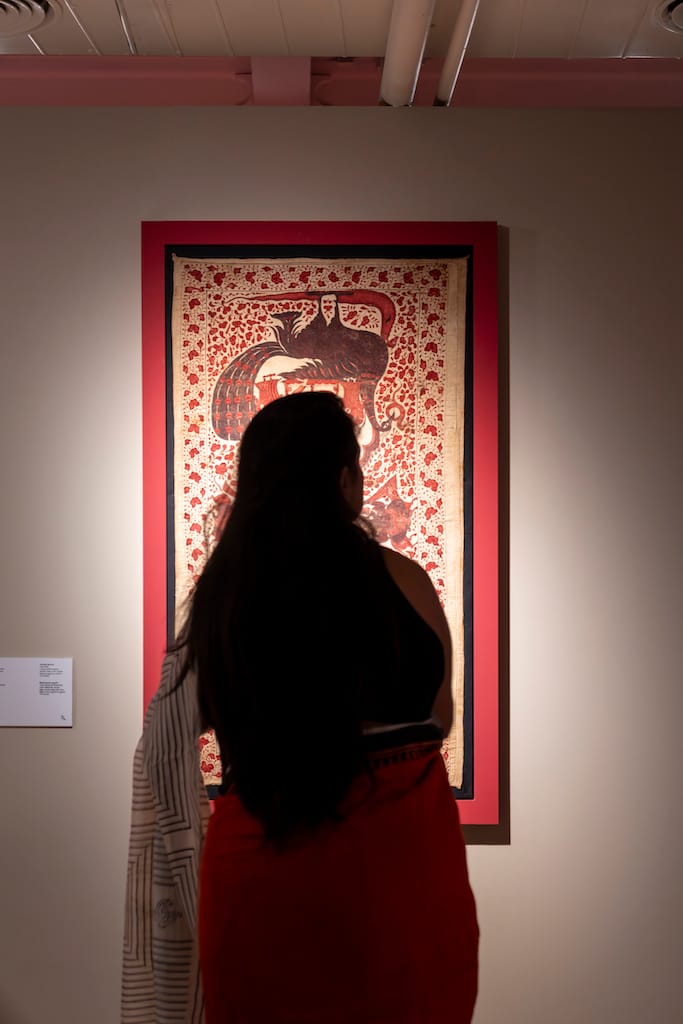
MAP’s Role in Cultural Narratives
The success of Chay Reds, Ferrous Black is a testament to MAP’s commitment to uncovering and narrating untold South Asian stories. “MAP has been instrumental in enabling intensive research, documentation, and execution, making the narration of these untold stories possible,” Sanhotra shares. By fostering collaboration with prominent scholars and providing resources, the museum has created a platform for South Asian voices to reclaim their narratives.
MAP’s broader mission to decolonize research and foster meaningful dialogue is evident in the exhibition’s execution. The museum not only highlights the technical brilliance of these textiles but also contextualizes them within the larger cultural and historical frameworks of the region.
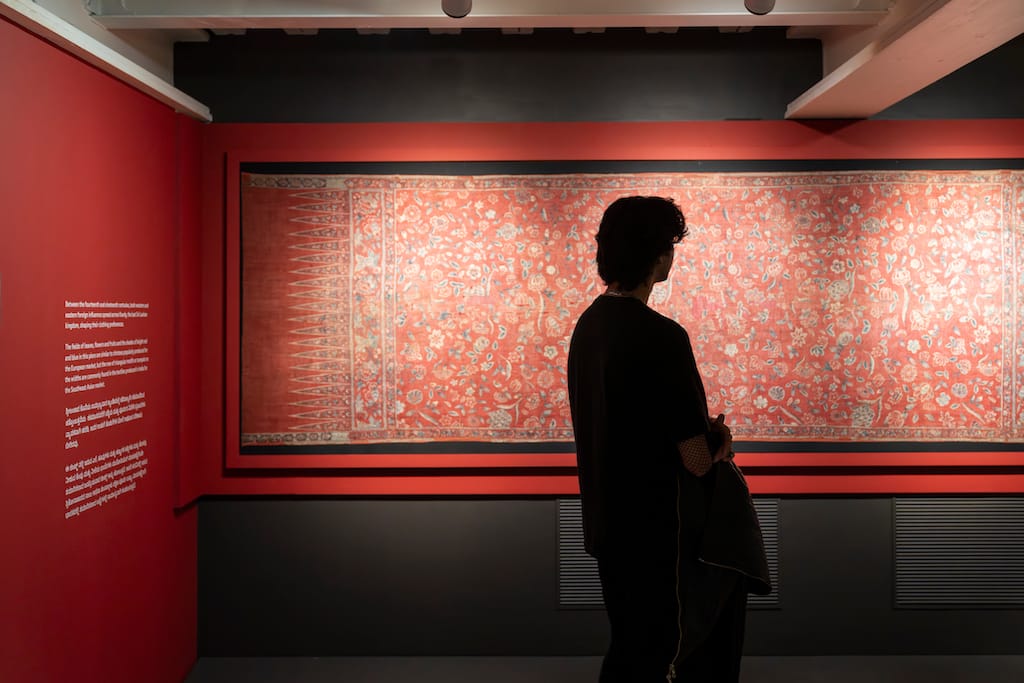
A Living Legacy
For Sanhotra, Chay Reds, Ferrous Black is more than an exhibition—it’s a call to action. “I hope this exhibition inspires scholars to explore the gaps in research and contribute to a more comprehensive understanding of South Asian textiles,” he says. By uncovering these stories, the exhibition aims to pave the way for new scholarship and a deeper appreciation of shared heritage.
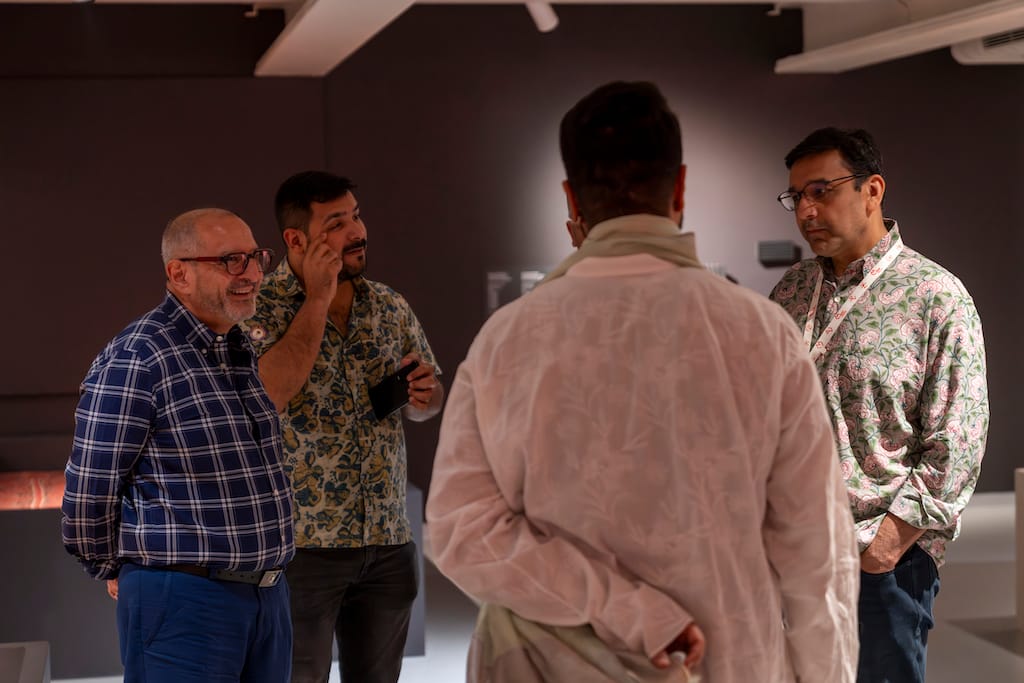
Rediscovering Shared Histories
Running until March 1, 2025, at MAP Bengaluru, Chay Reds, Ferrous Black offers visitors a chance to immerse themselves in the vibrant narratives of South Asia’s textile heritage. Through its exploration of colours, motifs, and techniques, the exhibition celebrates the ties that bind India and Sri Lanka, one thread at a time.
Sanhotra sums up the exhibition’s essence: “The various South Asian cultures share a sense of kinship through art, language, food, and natural resources, bound by the love for meticulously crafted textiles.” With Chay Reds, Ferrous Black, MAP not only honours that kinship but also inspires a renewed appreciation for the art of textiles.


